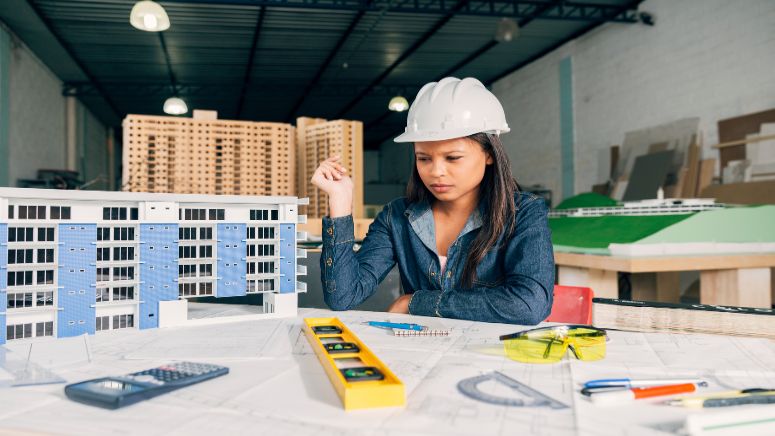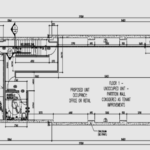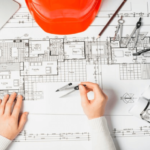Quick summary: 2024 will see the 3D modeling revolution in construction, enhancing decision-making with AR and VR. Where outsourcing meets demand, improving efficiency, and shaping the future of the AEC industry.
The construction industry has been going through an age of transformation. This shift in the industry landscape is because 3D modeling is standing at the forefront of this revolution.
Hence, the stakeholders are now making informed decisions through real-time changes. Hence, in 2024, the 3D modeling part of the AEC industry has become more of a necessity rather than a trend.
Taking these architectural 3D models has the potential of encompassing both exterior and interior spaces. Architectural 3D modeling in general offers one with a holistic understanding of the project ranging from spatial layouts to material choices.
Hence, this brings to making more informed decisions, both for the client and the designers. The article explores the nitty-gritty of 3D modeling in construction, focusing on key aspects such as architectural 3D modeling, 3D BIM modeling solutions, and the significance of outsourcing 3D services.
Evolution of Architectural 3D modeling
Tracing back to the times of construction, the industry has evolved from hand-drafted drawings to computerized drafting systems. In its nascent stages, 3D modeling was a labor-intensive process which was manual drafting and limited use of CAD tools.
However, there was an integration of more sophisticated tools and computational power which marked a significant leap forward. In the 20th century, the advent of BIM provided designers with a holistic approach, ranging from visual representation and crucial data related to construction, material, and project management.
This has been later evolved into cloud computing and advanced algorithms to accelerate the design process which enables architects to concretize more complex projects. In between all of this, the value of architectural 3D modeling has increased its value through a multitude of forms by giving architects means to communicate and conceptualize their designs.
Over time, there are various types of 3D modeling that have helped in enhancing design solutions. Conceptual 3D Modeling allows architects to develop initial design ideas. Later, Architectural 3D Modeling offers a detailed presentation of interior and exterior spaces helping in material selection and spatial understanding.
This has grown to BIM Modeling and Virtual Reality (VR) Systems for an immersive experience. As it is moving forward, architects develop this into 3D Printed Models giving them an even more tangible representation of designs.
They can be formulated in many formats, which consist of primitive modeling – using basic shapes and efficiency; polygonal modeling – representation through 3D coordinates and NURBA – forming complex 3D shapes through a mathematical model.
Other ways, such as 3D CAD modeling involve converting 2D drawings into virtual models with actual physical properties. This later helps one in accuracy and flexibility.
Way Forward for Architectural Design 3D Models
At the cusp of developing technology, the industry of architectural design 3D models is at an all-time high. It has been becoming more intricate and realistic with the involvement of virtual reality (VR) and augmented reality (AR).
In this involvement, the designers and architects are provided with one more medium of expression, one that is there and one to come for the people of the AEC industry.
Hence, we see there is a spike in 3D construction modeling needed for the clients and the designers. As it is more in the service sector in the AEC industry, it is better suggested to outsource 3D modeling services to people who have been handling it well.
Industry Demand and Supply
In this age of evolution and transformation, the need for architectural 3D modeling and 3D CAD modeling services is more important than ever. All the construction firms and architecture offices are recognizing the value of these services in streamlining their projects.
Hence, it is best recommended to outsource 3D modeling to companies that can encompass a range of offerings. This can include 3D renderings, virtual tours, and interactive presentations.
This can be later supported with multiple construction management tools and methods that can facilitate collaboration through the project lifecycle for improved decision-making skills.
Architectural 3D Modeling and its Offerings
As individuals in the AEC industry understand the use case of architectural 3D modeling and Building information modeling (BIM) service, there have been explorations of construction attitudes and architectural components. Other than station 3D renderings, the people who are outsourcing virtual flythroughs, flyovers, and real-time interactive presentations.
Through this, the architects can outsource their presentations as well to convert them into a more engaging and understandable format. Hence, this outsourcing model for construction professionals gives them a range of tools, formats, and mediums to communicate their intent by catering it to different project requirements and client preferences.
3D BIM Modeling Solutions: The Backbone of Modern Construction
3D construction modeling and architectural 3D modeling services have become a new base for the construction industry. It has been categorized as a new standard deliverable for all modern construction projects.
This helps in developing intelligent 3D models that communicate essential information about the building – leading it from design intricacies and material specifications. This further provides communication, minimizes errors, and increases the overall efficiency of the construction project.
Read also: Future of BIM in Construction: What Changes Are Expected?
Strategizing 3D Modeling Solutions
The use of 3D modeling solutions has taken in the basic workflow method of contemporary design and construction workflow, helping architectural projects to be conceived and executed. Architects and individuals can strategically choose modeling platforms that align with the project’s complexity, scalability, and collaboration needs.
When one adapts to the 3D modeling solutions and leverages their construction methodology, it provides one with a centralized database of building information, projecting them with the lifecycle of construction and its timeline.
This also can be used strategically for 3D modeling presentations, cost estimation, construction scheduling, and incorporating other valuable information.
Hence, the strategy of using 3D modeling solutions and outsourcing them to consultancy is about wisely aligning technology, expertise, and project goals to create a dynamic framework that positions a specific architectural project for future success in an ever-evolving technological landscape.
Defining Accuracy Through Architectural 3D Modeling
3D construction models help one to create dimensionally accurate models that provide detailed models, serving as a blueprint for construction. It also gives one the ability to detect and resolve potential problems hence making it time-efficient and cost-effective.
This approach provides the industry with a holistic understanding of the project that is going to be built with a humble understanding of services, architectural intent, potential challenges, and the building process.
The Magic of Outsourcing 3D Modeling Services
All in all, the architectural 3D modeling process helps one with a lot of benefits. But, in its tradeoff, it may take up a lot of time for the architect or designer to prepare them. Hence, to profitably use this medium to increase the efficiency of the project, it is advisable to delegate these functions to full-fledged 3D BIM modeling and 3D CAD modeling consultancy.
This trend has gained traction in 2024, where construction offices and architecture firms are understanding the benefits of collaborating with specialized service providers.
This helps one in reducing their learning time, and scope of errors, improves the efficiency of the project, and enables the firms to focus on their core competencies. Along with this, the architecture firms and construction offices are getting a chance to formulate a community of skilled professionals who are moving towards the final intent of the construction industry.
As we move through 2024, the role of architectural 3D modeling is more important than ever. It will bring a paradigm shift in times like 2024, in a way architectural projects are envisioned, managed, and executed.
This onset has brought in technology from architectural 3D modeling to advanced BIM solutions which underscores a pivotal role in moving forward of the construction industry and its processes.
Individuals in the AEC industry have begun to realize the potential architectural 3D modeling holds. Hence, the AEC industry is addressing and embracing these technological developments and adopting these new methods that engage utmost precision and streamline collaboration. For construction professionals, it is best recommended to outsource these services to mitigate collaboration and precision.
Conclusion
Introducing Architectural 3D Modeling helps one in architectural precision, informed decision-making, and integrating AR and VR which redefines design possibilities. Outsourcing improves efficiency, reduces errors, and improves professionalism. These process improvements are creating a dynamic future in manufacturing, where technology and collaboration combine together for the best results.






